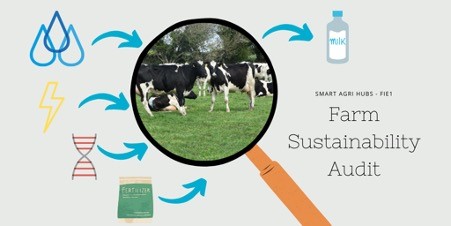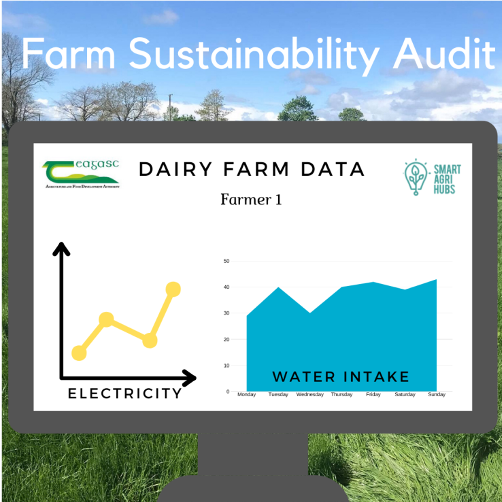Farm Sustainability Audit
Identifying key sustainability metrics to develop and implement a sustainability audit for dairy farmers to provide more robust information for different stakeholders.

Concept
At present, the dairy industry is focused on sustainable intensification In this context, the overall goal of this Flagship Innovation Experiment (FIE) is to identify key sustainability metrics and to facilitate the benchmarking and improvement of sustainability at farms and throughout the dairy industry. This quantification is done through the combination of on-farm sensors, existing farm data, internationally recognized models, integrated databases and the consultation of various key stakeholders in agriculture.

Using between 20 dairy farms as ‘Development and Deployment Farms’, this FIE develops and implements a sustainability audit system for milk production systems. The basic thrust is to measure a range of parameters related to energy and water use, nutrient use efficiency, animal welfare and greenhouse gas emissions, developing a platform leveraging these data and then provide objective and real-time information to the farmer for them to monitor and subsequently improve the sustainability of their production processes. The gathered information can be made available to end-users to ensure that they make informed decisions. Ultimately, once developed, the tool could be replicated in other countries across Europe.
Implementation
There are currently 20 farms selected for this project. There are 11 farms selected from the Glanbia monitor farms and 9 farms selected from the Dairygold monitor farms. One of the requirements, aside from the willingness of the farmers to collaborate on new technologies, was the availability of WiFi on the farm.
The most significant technical success story is the development of the database with multiple different files coming from many different sources. Each file had to be individually mapped for each farmer. The water and electricity files were all configured differently as it depends on the way the farm itself is organized. For example, one farm might have the drinking water coming from the main well and another farmer might have the drinking water coming from a separate well. This would require different mapping to be carried out for each farm ensure reliable accurate results. All of this data is now flowing automatically into the newly integrated database where information is securely stored.
The farmers are very open-minded about improving their sustainability on-farm. These dairy farmers want to implement strategies to increase their sustainability. . The outputs of this project could provide the next steps in robust data collection and assembly for sustainability assessment on farms.
Lessons Learnt
Dependency on a single provider generates issues. Originally this FIE aimed to install body condition score (BCS) sensors on each farm to quantify animal welfare but the company that was brought onto the project to supply, install and maintain these BCS sensors has ceased trading and is no longer able to fulfil its commitments to this project. . While this has caused some delays, it has not stopped progression in other aspects of the project (e.g. installation of water meters and set up of the database). This provider was developing such novel and unique sensors it meant that one aspect of the project was highly dependent on them and they could not be easily replaced.
Data management and standardization. Getting full data released from partners has been slower than anticipated. As data is flowing from multiple different companies and partners, the formatting of each file is dramatically different. Coding to allow the software and database to read and understand each file took a little longer than expected and the formats for each file was different. Especially for the water and energy monitor data as each farm has a different metering system, whereby some meters are automatically uploading and others and manually read. Therefore extra attention was required when coding these files. However, this is leading to the development of a process, which we consider one of the most significant technical successes of this experiment.

